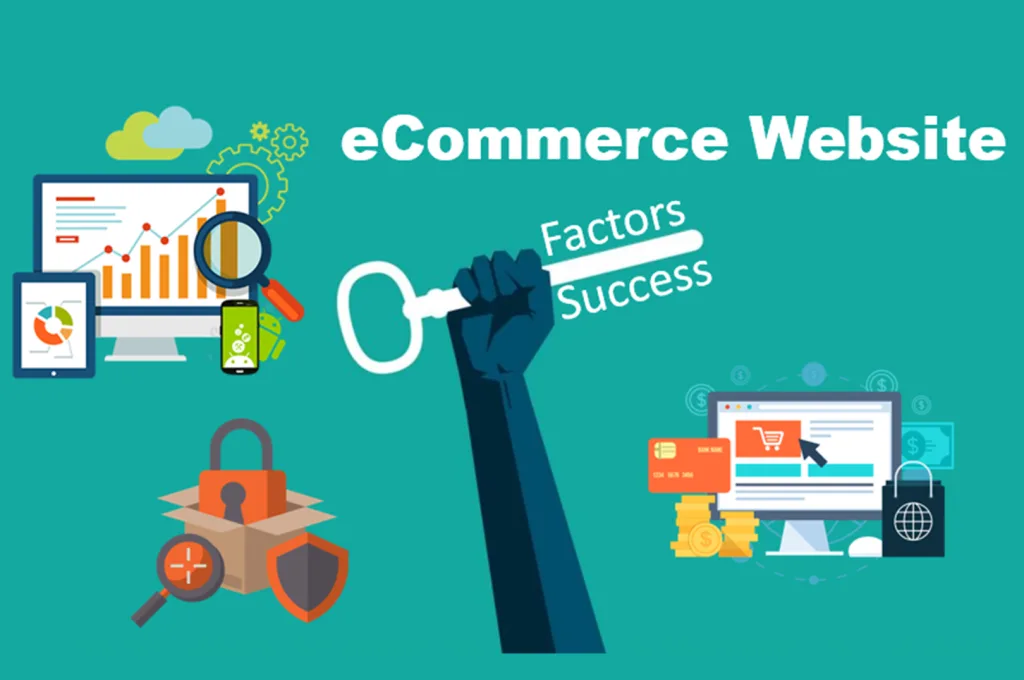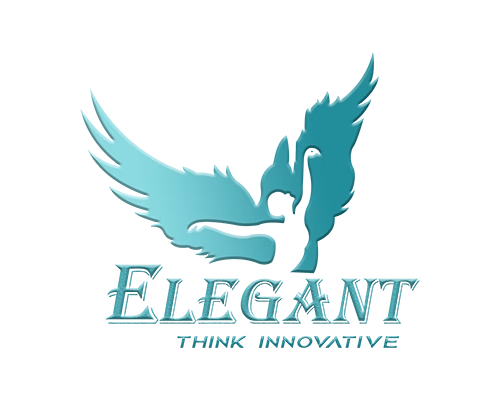How to build a successful e-commerce website that attracts customers
How to build a successful e-commerce website that attracts customers
Introduction
Building a successful e-commerce website is essential for any business that wants to reach a wider audience and increase sales. An effective e-commerce website should be easy to navigate, have a secure payment system, and provide customers with a positive shopping experience. Additionally, it should be optimized for search engines, have a well-designed layout, and feature attractive visuals. By following these steps, you can create an e-commerce website that will attract customers and help your business grow.

How to Design an Engaging and User-Friendly E-Commerce Website
Creating an engaging and user-friendly e-commerce website is essential for any business that wants to succeed in the digital age. An effective website should be easy to navigate, visually appealing, and provide customers with a seamless shopping experience. Here are some tips for designing an engaging and user-friendly e-commerce website.
1. Make Navigation Easy: Navigation should be intuitive and straightforward. Use clear labels and menus to make it easy for customers to find what they’re looking for. Include a search bar and a sitemap to help customers quickly locate the products they need.
2. Optimize for Mobile: Mobile optimization is essential for any e-commerce website. Make sure your website is optimized for mobile devices so customers can easily access it from any device.
3. Use High-Quality Images: High-quality images are essential for any e-commerce website. Use clear, crisp images to showcase your products and make them more appealing to customers.
4. Include Product Descriptions: Product descriptions are important for any e-commerce website. Make sure to include detailed descriptions of each product so customers can make informed decisions.
5. Offer Multiple Payment Options: Offer multiple payment options to make it easier for customers to purchase your products. Include options such as credit cards, PayPal, and Apple Pay.
6. Include Customer Reviews: Customer reviews are a great way to build trust and credibility. Include customer reviews on your website to show potential customers that your products are of high quality.
7. Offer Live Chat: Live chat is a great way to provide customers with immediate assistance. Include a live chat feature on your website so customers can get help quickly and easily.
By following these tips, you can create an engaging and user-friendly e-commerce website that will help you attract more customers and increase sales
Strategies for Optimizing Your E-Commerce Website for Search Engines
1. Utilize Keywords: Identify the keywords that are relevant to your e-commerce website and use them throughout your content. This will help search engines understand the content of your website and rank it accordingly.
2. Optimize Your Site Structure: Make sure your website is organized in a way that is easy for search engines to crawl. This includes having a clear hierarchy of pages, using descriptive URLs, and having a sitemap.
3. Improve Your Page Load Speed: Search engines prioritize websites that load quickly. Make sure your website is optimized for speed by compressing images, minifying code, and using a content delivery network.
4. Create Quality Content: Search engines prioritize websites that have high-quality content. Make sure your content is well-written, informative, and relevant to your target audience.
5. Utilize Internal Links: Internal links help search engines understand the structure of your website and how the pages are related to each other. Make sure to link to relevant pages within your website.
6. Utilize External Links: External links help search engines understand the authority of your website. Make sure to link to other relevant websites and blogs.
7. Optimize Your Images: Make sure your images are optimized for search engines by including descriptive alt text and file names.
8. Utilize Structured Data: Structured data helps search engines understand the content of your website. Make sure to include structured data such as schema.org markup on your website.
9. Monitor Your Performance: Monitor your website’s performance in search engine rankings and adjust your strategy accordingly.
By following these strategies, you can optimize your e-commerce website for search engines and improve your website’s visibility and ranking.
Tips for Creating an Effective E-Commerce Website Content Strategy
1. Identify Your Target Audience: Before you can create an effective e-commerce website content strategy, you must first identify your target audience. Consider who your ideal customer is and what their needs and interests are. This will help you create content that resonates with them and encourages them to take action.
2. Establish Your Brand Voice: Establishing a consistent brand voice is essential for creating an effective e-commerce website content strategy. Your brand voice should be consistent across all of your content and should reflect the values and personality of your brand.
3. Create Quality Content: Quality content is essential for an effective e-commerce website content strategy. Make sure that all of your content is well-written, informative, and engaging.
4. Optimize for Search Engines: Optimizing your content for search engines is essential for an effective e-commerce website content strategy. Make sure to include relevant keywords and phrases in your content to help it rank higher in search engine results.
5. Promote Your Content: Once you have created quality content, you need to promote it. Utilize social media, email marketing, and other channels to get your content in front of your target audience.
6. Monitor and Analyze Your Results: Monitor and analyze the performance of your content to determine what is working and what isn’t. This will help you refine your e-commerce website content strategy and ensure that it is as effective as possible.
How to Use Social Media to Promote Your E-Commerce Website
Social media is an invaluable tool for promoting an e-commerce website. With the right strategy, businesses can reach a wide audience and increase their online visibility. Here are some tips for using social media to promote an e-commerce website.
1. Create a Social Media Presence: The first step is to create a presence on the major social media platforms. This includes setting up accounts on Facebook, Twitter, Instagram, and other popular sites. Make sure to include a link to your e-commerce website in your profile.
2. Post Regularly: Once you have established a presence, it is important to post regularly. This will help to keep your followers engaged and will help to increase your visibility. Try to post content that is relevant to your e-commerce website and that will be of interest to your followers.
3. Use Visuals: Visuals are a great way to draw attention to your posts. Use images, videos, and other visuals to make your posts more engaging.
4. Engage with Your Followers: Social media is a great way to engage with your followers. Respond to comments and questions, and use polls and surveys to get feedback from your followers.
5. Promote Your Products: Use social media to promote your products and services. Post about new products, discounts, and other promotions.
6. Monitor Your Performance: Use analytics tools to monitor the performance of your social media posts. This will help you to identify what is working and what isn’t, and will allow you to adjust your strategy accordingly.
By following these tips, you can use social media to effectively promote your e-commerce website. With the right strategy, you can reach a wide audience and increase your online visibility.
Strategies for Improving Your E-Commerce Website Conversion Rate
1. Optimize Your Website for Mobile: With the majority of online shoppers now using mobile devices to browse and purchase products, it is essential to ensure that your e-commerce website is optimized for mobile. This includes making sure that the website is responsive, loading quickly, and easy to navigate.
2. Improve Your Website Design: A well-designed website can help to improve the user experience and encourage customers to stay on your website longer. Make sure that your website is visually appealing, easy to navigate, and has a clear call-to-action.
3. Offer Free Shipping: Offering free shipping can be a great way to encourage customers to purchase from your website. Consider offering free shipping for orders over a certain amount or for certain products.
4. Utilize Social Media: Social media can be a great way to reach potential customers and drive traffic to your website. Utilize social media platforms to promote your products and services, and encourage customers to share their experiences with your brand.
5. Use Retargeting Ads: Retargeting ads can be a great way to remind customers of products they have viewed on your website. Utilize retargeting ads to encourage customers to return to your website and complete their purchase.
6. Offer Discounts and Promotions: Offering discounts and promotions can be a great way to encourage customers to purchase from your website. Consider offering discounts for first-time customers or loyalty programs for returning customers.
7. Improve Your Checkout Process: A lengthy or complicated checkout process can be a major deterrent for customers. Make sure that your checkout process is simple and secure, and that customers can easily complete their purchase.
8. Utilize User-Generated Content: User-generated content can be a great way to build trust with potential customers. Encourage customers to share their experiences with your products and services, and feature this content on your website.
Conclusion
Building a successful e-commerce website that attracts customers requires a lot of hard work and dedication. It is important to have a well-designed website that is easy to navigate, secure, and provides a great customer experience. Additionally, it is important to have a comprehensive marketing strategy that includes SEO, content marketing, and social media marketing. Finally, it is important to have a customer service team that is available to answer questions and provide support. With the right combination of these elements, you can create a successful e-commerce website that will attract customers and help your business grow.
If you’re looking to build a successful e-commerce website that attracts customers, look no further than Elegant! With their easy-to-use platform, you can create a website that looks great and is easy to navigate. Plus, they offer a variety of features to help you get the most out of your website. So, what are you waiting for? Start building your successful e-commerce website today with Elegant.!
How to build a successful e-commerce website that attracts customers Read More »











